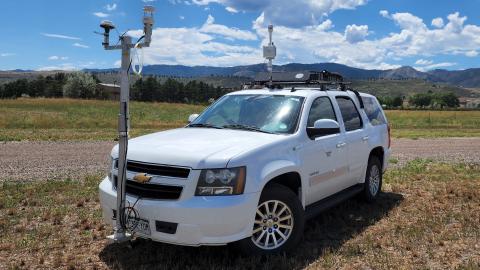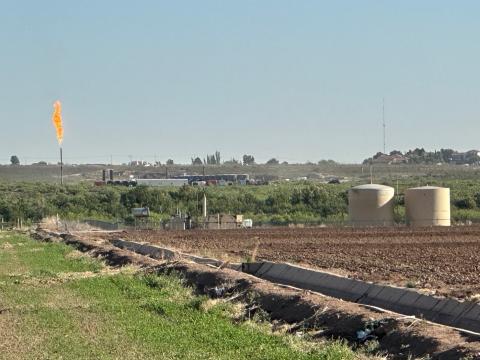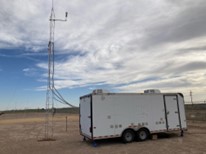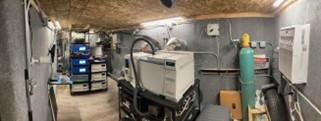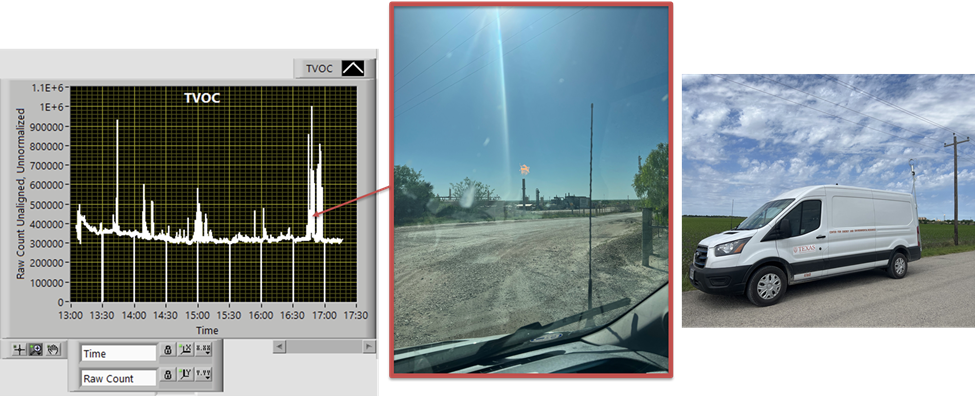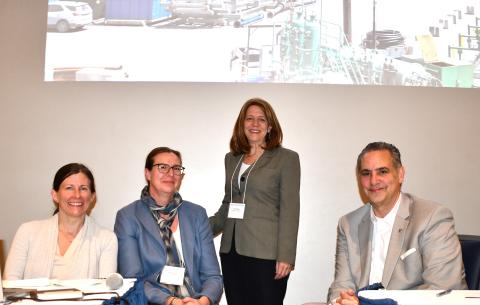Quarterly Update June 2023
HEI Energy's June 2023 Quarterly Research Updates are now available. You will find the latest progress from each of our 5 exposure studies in communities affected by oil and gas development.
Project Updates
Air Quality and Noise Research
Measuring and Modeling Air Pollution and Noise Exposure Near Unconventional Oil and Gas Development in Colorado
Read the full Research Report here
The goal of this study is to develop community exposure profiles in the Colorado North Front Range for chemicals in the air as well as noise over the UOGD lifecycle, from site preparation through production of multi-well pads. This study will assess potential exposure pathways connecting UOGD chemical emissions to nearby communities and use the results to better understand the public health implications. The investigators will apply the following methods to achieve these goals:
- Use a combination of existing air quality data, innovative air quality measurements, and source apportionment models to quantify potential exposures.
- Collect noise measurements from UOGD operations to quantify potential exposures.
- In collaboration with the Hildebrandt Ruiz team, develop the "TRAcking Community Exposures and Releases" (TRACER) model for use in the Denver-Julesburg region to predict chemical emissions from specific UOGD processes. The teams will combine the predicted emissions with an air quality model to estimate concentrations of chemicals in the air.
- Evaluate model performance by comparing air quality monitoring data collected by this and the Franklin team with model predictions in the Denver-Julesburg region.
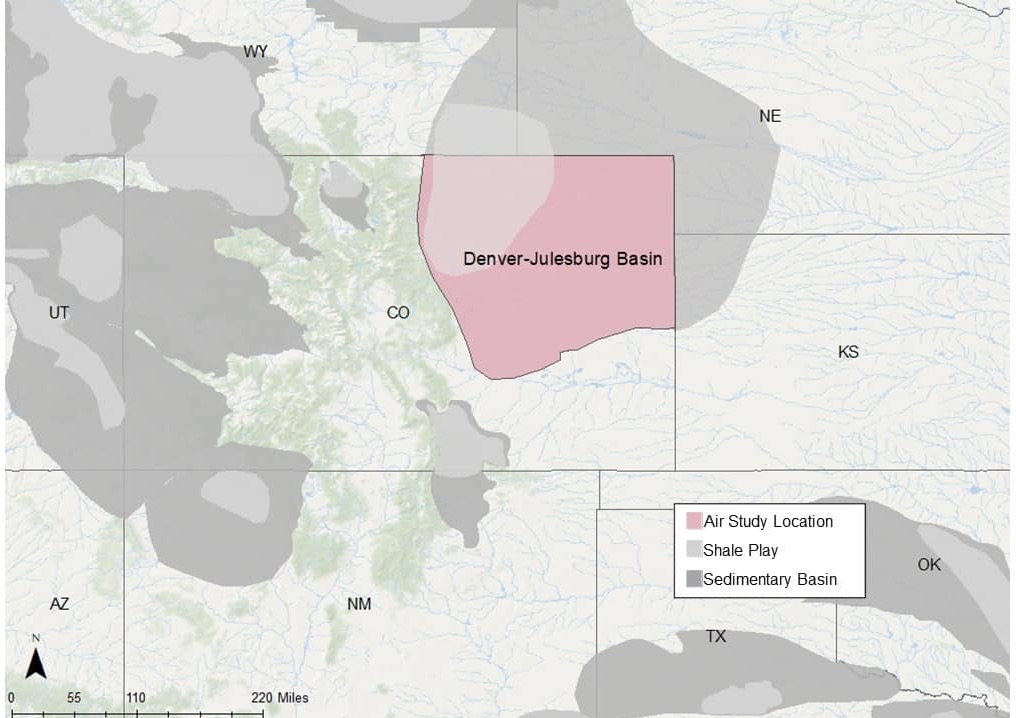
What's Happened
- Continued meetings with an unconventional oil and gas development (UOGD) operator in the Denver-Julesburg Basin to review details of their operations at a large, multi-well pad near Aurora, Colorado, where the team completed monitoring of drilling and are currently monitoring hydraulic fracturing.
- Secured arrangements with another UOGD operator in the region to monitor upcoming drilling and completion operations at a large, multi-well pad near Brighton, Colorado.
- Reviewed details of emissions calculations provided by the US EPA Oil &Gas Emissions tool to support development of the emissions component of the TRACER model.
- Dr. Collett gave a poster presentation on the research at the 2023 HEI Annual Conference in Boston.
What's New
- Continuing to monitor hydraulic fracturing operations at our first study pad near Aurora, Colorado. A transition to flowback operations is expected in June 2023 and monitoring will continue.
- Finalizing plans and logistical arrangements for monitoring air quality and noise at a second study pad near Brighton, Colorado.
- Identifying areas where pre-production emissions information from EPA’s O&G emissions tool may not adequately represent current operational practices or provide sufficient temporal resolution for use in the TRACER model. One example is drilling mud emissions, where the estimates in the current tool derive from offshore operations in the 1970s. The team is testing methods to use recent monitoring data collected during drilling operations in Broomfield, Colorado to provide up-to-date information about drilling mud emissions.
What's Next
- Begin air and noise monitoring at the study pad near Brighton, Colorado, in July 2023. We will begin with monitoring of drilling operations followed by hydraulic fracturing and flowback operations.
- Conduct a site tour of the Brighton pad drilling operations to learn more about drilling mud use and recycling and to formulate plans for collection of samples of fresh and recycled drilling fluids for laboratory study of temperature-dependent emissions.
- Continue discussions with additional operators to identify a third well pad where we can examine noise associated with new e-frac technologies, which are claimed to reduce noise during hydraulic fracturing operations.
Upcoming Events
- Community Open House in Brighton, Colorado on August 23, 2023, from 4-7 pm.
Assessing Source Contributions to Air Quality and Noise in Unconventional Oil Shale Plays
Read the full Research Report here
The goal of this study is to understand potential community exposure to UOGD-associated chemicals and radioactivity in air as well as noise. The investigators will apply the following methods to achieve their goals:
- Monitor air quality and noise in the Permian region of New Mexico and the Eagle Ford region of Texas to understand how potential exposures vary across the regions and over different time scales.
- Combine existing air monitoring data in the Denver-Julesburg region of Colorado and original data collected in the Permian and Eagle Ford regions with statistical models to distinguish UOGD from other sources of chemicals in the air and noise sources.
- Leverage satellite data to examine the association between natural gas flaring and air quality.
Collaborate with the Collett and Hildebrandt Ruiz teams to evaluate the "TRAcking Community Exposures and Releases" (TRACER) model performance in the Denver-Julesburg and Eagle Ford regions.
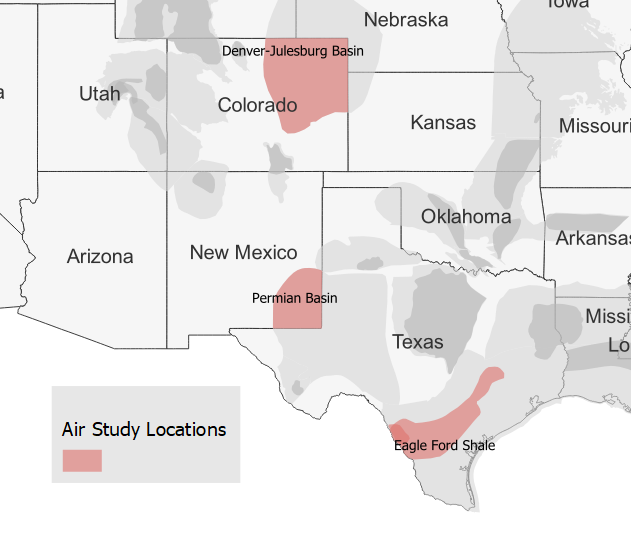
What's Happened
- Deployed an air quality and noise monitoring trailer in Loving, NM.
- Launched a website for sharing data collected using the monitoring trailer.
- Hosted an initial Community Open House at the Alejandro Ruiz Community center in Loving, NM.
- Carlsbad Current-Argus published an article about the team’s research.
- Dr. Franklin gave a poster presentation on the research at the 2023 HEI Annual Conference in Boston.
What's New
- Analyzing the air quality data collected at the Loving NM trailer, examining trends, and comparing it with air quality data collected as part of separate studies in Carlsbad, NM and the Denver Julesburg Basin, CO.
- Recruiting additional volunteers to host passive air quality monitoring devices in a sampling network across the Carlsbad/Loving, NM area.
- Completing the analysis and preparing a publication examining the role of unconventional oil and gas production and flaring on long-term trends in air concentrations of nitrogen oxides and ozone in Carlsbad, NM.
What's Next
- Develop a training video to assist community volunteers who are hosting passive samplers.
- Begin deployment of the passive samplers in mid-June 2023.
- Make site visits periodically throughout the summer and continue to engage with community groups.
- Continue analysis of air quality and noise data. Passive air quality monitoring data will become available by late summer 2023.
Upcoming Events
- Community Open House in Karnes City (Summer 2023; date and location to be determined).
Predictive, Source-oriented Modeling and Measurements to Evaluate Community Exposures to Air Pollutants and Noise from Unconventional Oil and Gas Development
The goal of this study is to develop a broadly applicable model, the "TRAcking Community Exposures and Releases" (TRACER) model. The model will assess potential community exposures to chemicals in the air from UOGD and inform future health studies. The model will then be used to predict the magnitude and frequency of emissions from individual UOGD sources, and when coupled with dispersion modeling, will generate concentrations of chemicals in the air. The investigators will apply the following methods to achieve their goals:
- Collect stationary and mobile air quality and noise measurements in the Eagle Ford, Texas region.
- In collaboration with the Collett team, develop the TRACER model in the Eagle Ford region to generate chemical emissions data from specific UOGD processes. The teams will combine the predicted emissions with air quality models to estimate local and regional concentrations of chemicals in the air.
- Expansion of the TRACER model to the Marcellus region, leveraging data from the separately funded Appalachian Methane Initiative.
- Evaluate model performance by comparing air quality monitoring data with model predictions in the Eagle Ford region.
- Use TRACER model results to assess spatial and temporal variability of potential community exposures to UOGD-associated chemicals and evaluate the effects of different UOGD sources on potential community exposures.
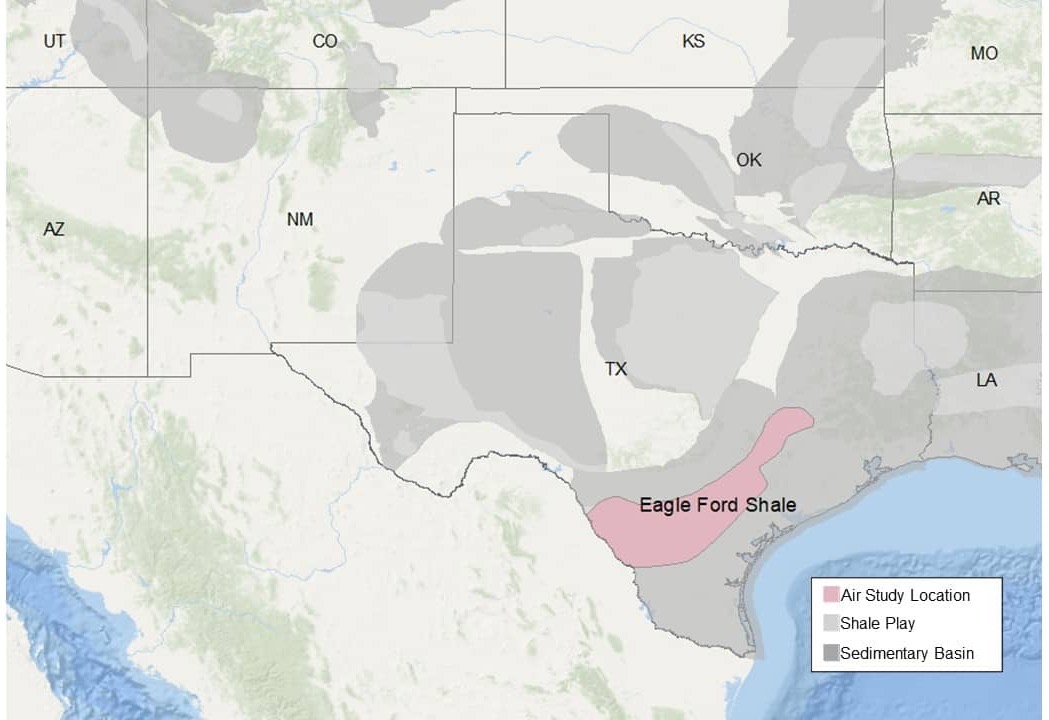
What's Happened
- Conducted stationary and mobile measurements in Karnes City, TX, from March to May 2023, focusing on measurement of plumes from active flares (Figure X).
- Drafted a manuscript summarizing modeling work to assess how nitrogen oxide emissions from unconventional oil and gas in different locations over time affected regional ozone formation.
- Dr. Hildebrandt Ruiz gave a poster presentation on the research at the 2023 HEI Annual Conference in Boston.
What's New
- Focusing on analysis of the dataset that the team collected in and near Karnes City.
- Continuing modeling activities.
- Planning a Community Open House in Karnes City.
What's Next
- Submit the manuscript about variability in emissions of nitrogen oxides.
- Continue modeling activities.
- Plan for the next measurement campaign.
Upcoming Events
- Community Open House in Karnes City (Summer 2023; date and location to be determined).
Water Quality Research
Using Geoscientific Analysis and Community Engagement to Analyze Exposures to Potential Groundwater Contamination
Read the full Research Report here
The overall goal of this study is to evaluate potential linkages between unconventional oil and gas development (UOGD) and groundwater contamination in a tri-county region of Pennsylvania with many overlapping potential sources of contamination. The analysis will be informed by focus groups in the region to help identify areas of community concern. The team plans to produce a broadly applicable framework to study the relationship between specific UOGD processes and potential groundwater contamination. The investigators will apply the following methods to achieve their goals:
- Combine an existing data set of chemical measurements in groundwater with machine learning to isolate the influences of natural and anthropogenic processes on groundwater chemistry and to identify chemical signatures of UOGD.
- Evaluate linkages between UOGD and potential water contamination.
- Develop an approach to map locations of potential contamination from UOGD activities for application to future investigations of potential human exposures and health effects associated with UOGD.
- Collected and analyzed well water samples well water in “hot spots” identified through their analysis as likely locations of wastewater spills, in order to evaluate the team’s approach.
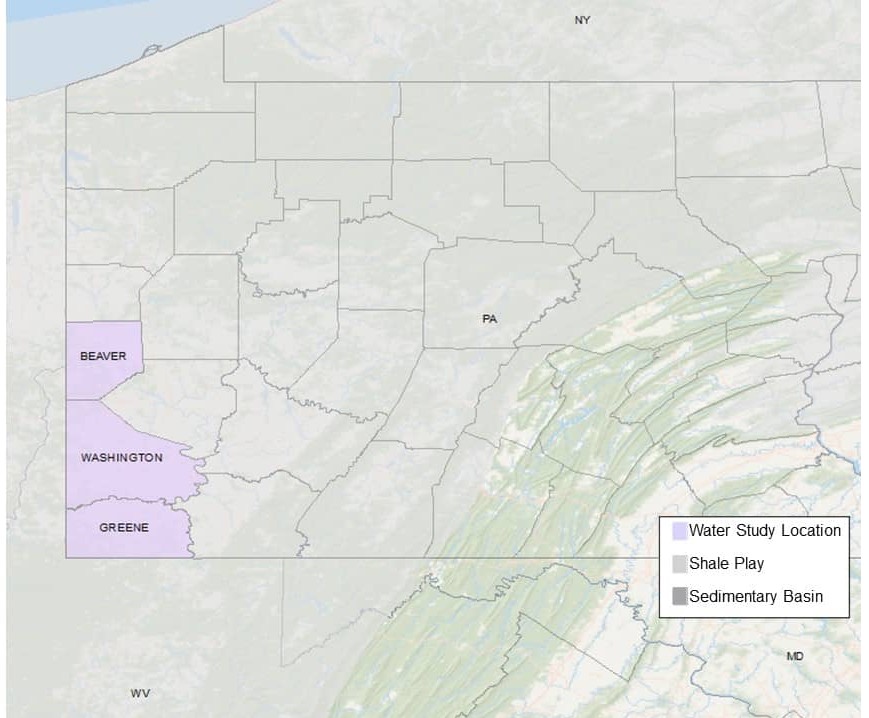
What's Happened
- Graduate students Sam Shaheen and Owen Harrington presented at the Shale Network Workshop on May 19, 2023.
- Harrington gave a presentation at the March 2023 American Association of Geographers Conference titled, “Something in the Water?: Exploring Uncertainty and Knowledge Gaps around Drinking Water Contamination from Unconventional Oil and Gas Drilling Development in Washington County, PA”
- Dr. Brantley gave an invited talk at Carleton College in Northfield, MN, in April 2023 titled, “How Fracking Affects our Water.”
- Drs. Brantley and Wen gave a poster presentation on the research at the 2023 HEI Annual Conference in Boston (all team members co-authored the poster).
What's New
- Continuing to analyze potential community exposures.
- Completing analyses using violation citations from the Pennsylvania Department of Environmental Protection to understand the possible effects of specific oil and gas development processes on groundwater quality.
What's Next
- Prepare for additional focus groups in summer 2023 to communicate preliminary results.
- Prepare manuscripts for publication.
- Finalize project and submit final Investigator Report to HEI Energy in Fall 2023.
Upcoming Events
- Dr. Sue Brantley will give an invited Halbouty Lecture at the Geological Society of America Annual Meeting in Pittsburgh PA, Oct 17, 12:15-1:15p.m., entitled “How Fracking Affects our Water.”
Assessing the Effects of Unconventional Oil and Gas Development on Community Water Sources
The study is complete and now undergoing peer review and an independent quality assurance/quality control audit before HEI Energy releases the research report in the first part of 2026.
The goal of this study is to evaluate whether instances of community water supply contamination in Colorado and New Mexico might be the result of unconventional oil and gas development (UOGD). The study will be useful for understanding the UOGD operational conditions that might present a risk to community water supplies. The investigators will apply the following methods to achieve their goals:
- Analyze existing groundwater and surface water quality data for community water supplies near UOGD and examine correlations between water quality and oil and gas operational data.
- Examine temporal and spatial correlations between UOGD and community water supply contamination to identify possible exposure pathways.
- Model contaminant transport along possible exposure pathways to evaluate the feasibility of the pathways connecting community water supplies with UOGD.
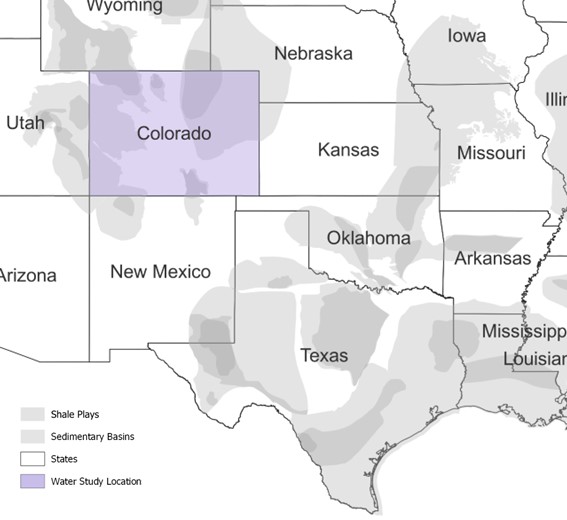
What's Happened
- Examined co-occurrence of volatile organic compounds such as benzene, toluene, ethylbenzene, and xylenes (BTEX) with thermogenic methane in Colorado using the Colorado Oil and Gas Conservation Commission’s water quality database.
- In two of the nineteen case studies previously identified as having BTEX concentrations higher than Colorado’s drinking water maximum contaminant levels (MCLs), the team estimated health risks from exposure to BTEX and other contaminants (primarily metals).
- Started modeling groundwater flow and transport for four of the nineteen case studies where BTEX concentrations exceeded Colorado’s drinking water MCLs.
- Dr. Allshouse from the Colorado School of Public Health presented at the Shale Network Workshop, Pennsylvania State University, State College, Pennsylvania, (May 18-19, 2023) on a draft paper entitled, "Assessing the effects of oil and gas development on Colorado’s water sources: Potential risks and policy recommendations."
- Dr. Ryan gave a poster presentation on the research at the 2023 HEI Annual Conference in Boston.
What's New
- Assessing the co-occurrence of BTEX and thermogenic methane in community water.
- Connecting with the Drinking Water Bureau and their Ground Water Quality Bureau of the New Mexico Environment Department to obtain water quality data that will be analyzed similarly to the Colorado water quality data.
What's Next
- Obtain New Mexico data on water quality and oil and gas operations that are necessary to conduct analyses similar to those conducted using data from Colorado.


